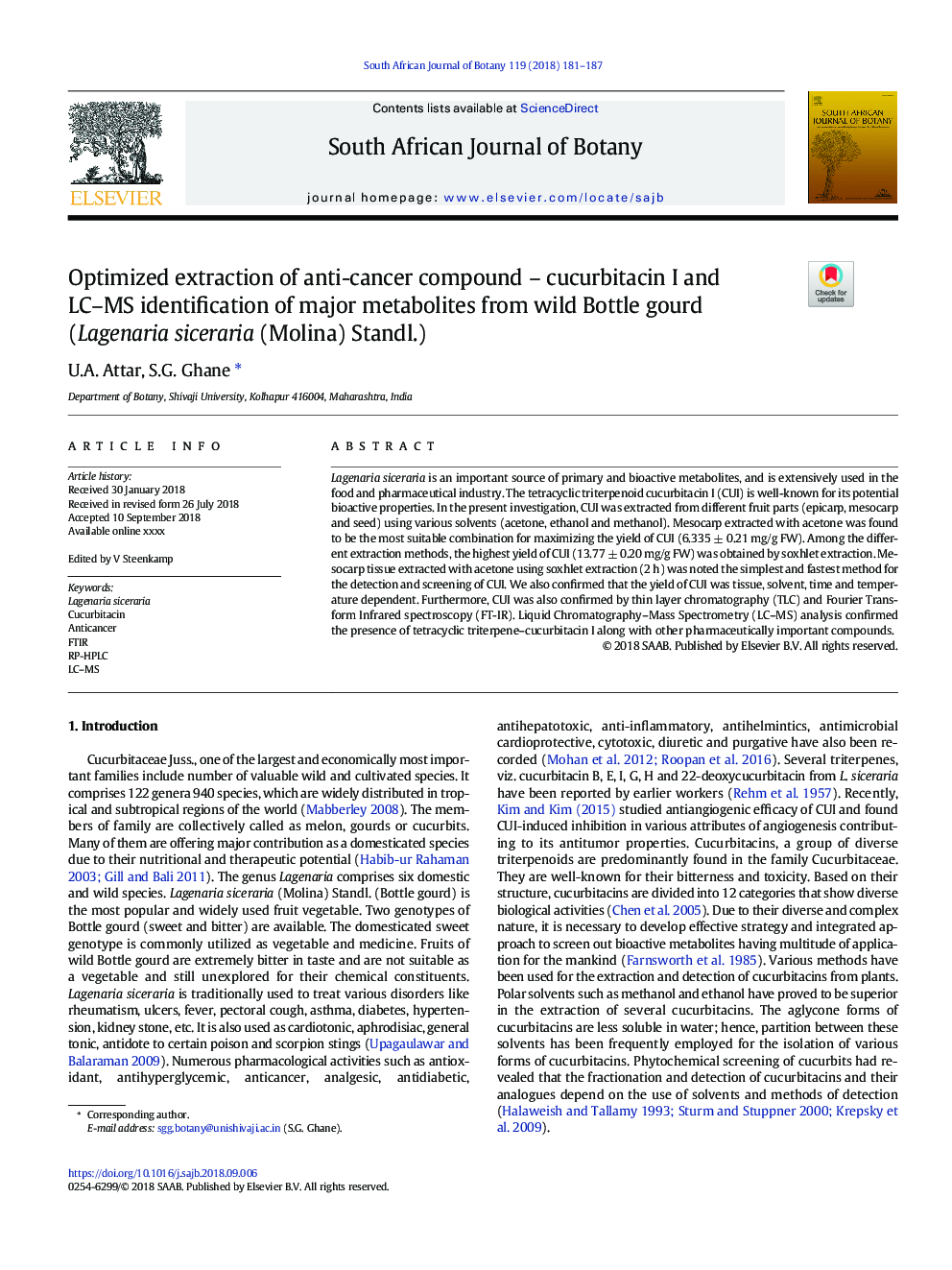| Article ID | Journal | Published Year | Pages | File Type |
|---|---|---|---|---|
| 11032618 | South African Journal of Botany | 2018 | 7 Pages |
Abstract
Lagenaria siceraria is an important source of primary and bioactive metabolites, and is extensively used in the food and pharmaceutical industry. The tetracyclic triterpenoid cucurbitacin I (CUI) is well-known for its potential bioactive properties. In the present investigation, CUI was extracted from different fruit parts (epicarp, mesocarp and seed) using various solvents (acetone, ethanol and methanol). Mesocarp extracted with acetone was found to be the most suitable combination for maximizing the yield of CUI (6.335â¯Â±â¯0.21â¯mg/g FW). Among the different extraction methods, the highest yield of CUI (13.77â¯Â±â¯0.20â¯mg/g FW) was obtained by soxhlet extraction. Mesocarp tissue extracted with acetone using soxhlet extraction (2â¯h) was noted the simplest and fastest method for the detection and screening of CUI. We also confirmed that the yield of CUI was tissue, solvent, time and temperature dependent. Furthermore, CUI was also confirmed by thin layer chromatography (TLC) and Fourier Transform Infrared spectroscopy (FT-IR). Liquid Chromatography-Mass Spectrometry (LC-MS) analysis confirmed the presence of tetracyclic triterpene-cucurbitacin I along with other pharmaceutically important compounds.
Related Topics
Life Sciences
Agricultural and Biological Sciences
Agronomy and Crop Science
Authors
U.A. Attar, S.G. Ghane,
